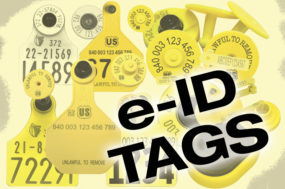This is the lowest total headcount since 1952; when our population was roughly half what it is today, a gallon of gas cost 20 cents, and Elvis Presley was in high school.
The Southern Plains drought definitely had its impact as the number of beef cows was down 3 percent nationally, Texas cows were down 13 percent, and Oklahoma had 14 percent fewer mother cows within its borders than the same time a year earlier.
However, one severe drought in a major cattle production area did not bring about the smallest cattle inventory in 60 years.
Herd reduction has been a steady trend since the mid-1990s, when years of producing huge continental crossbred cattle resulted in supplies outweighing sluggish consumer demand.
Since then, the cyclical trend of building and reducing our herd size has failed to be realized with consistently higher input costs, the aging of our cow-calf producer and stiff competition for land from row crop grain production.
The number of beef cows harvested in 2011 was 8.2 percent more than the previous three-year average, 13.7 percent more than the previous five-year average and 21.7 percent more than the previous 10-year average.
The full advance of this winter’s feeder cattle market has been noted on heifers as the steer/heifer spread has narrowed to its tightest point in recent memory.
This is the result of steer buyers searching for ways to cheapen up on the average-to-plainer-quality offerings and additional competition from replacement buyers on the highest-quality kinds.
Prices for top-quality, open seven-weight commercial heifers in the Northern Plains (especially Nebraska) have topped $1,250 per head with destinations as far away as Russia.
Feeder and stocker cattle demand has been just as rampant with offerings soon to be celebrating their first birthday and possessing a long-weaned condition that will allow them to perform like true yearlings, which have been scarce since the middle of fall.
The unbelievably mild winter throughout the central portions of the country has been ideal for cattle growing, with efficient weight gains at every level of production.
The market for lightweight calves and short-yearling stockers continues its path to the moon as grass interests have aggressively bid as if spring had already sprung.
The multi-million dollar question is, “How far can these price levels go?” Stocker cattle and calves will almost certainly realize increased demand amid tighter supplies as the cheap gains on forage can rather quickly recoup exorbitant purchase prices.
On the other hand, feeder cattle are at the cusp of outdistancing the fed cattle market and packers have grown tired of their negative margins.
Boxed beef cut-out values have met strong resistance around $185, which makes it difficult for packers to continue paying upwards of $2 per pound for a dressed carcass.
Hide and offal returns can pick up a portion of the slack, but an increase in retail beef prices must be seen for fed cattle to reach the $130 or more that many pens need to break even.
Breaking out of the seasonal lull in export demand should help but, even though we’re enjoying the best foreign interest since before the BSE outbreak, around 89 percent of our beef products are still consumed in the good ol’ U.S. ![]()







